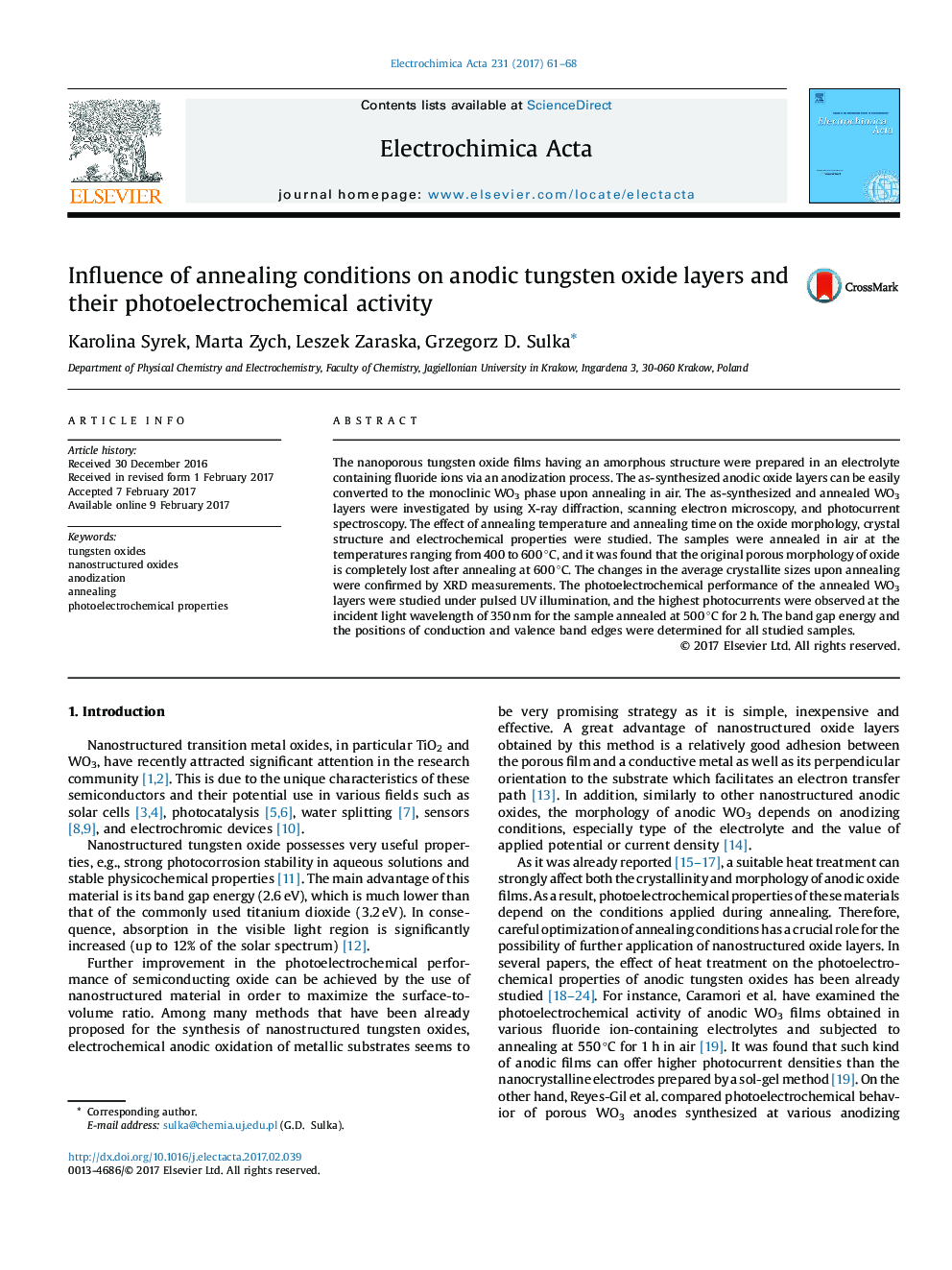| Article ID | Journal | Published Year | Pages | File Type |
|---|---|---|---|---|
| 6471951 | Electrochimica Acta | 2017 | 8 Pages |
â¢Effect of annealing temperature on the morphology and crystalline structure of anodic WO3 was investigated.â¢Photoelectrochemical properties of WO3 layers annealed at different temperatures were studied.â¢Edges of conduction and valence bands were estimated for tungsten oxide layers annealed at different temperatures.â¢Influence of annealing time on crystalline structure, morphology and photoelectrochemical performance was studied.
The nanoporous tungsten oxide films having an amorphous structure were prepared in an electrolyte containing fluoride ions via an anodization process. The as-synthesized anodic oxide layers can be easily converted to the monoclinic WO3 phase upon annealing in air. The as-synthesized and annealed WO3 layers were investigated by using X-ray diffraction, scanning electron microscopy, and photocurrent spectroscopy. The effect of annealing temperature and annealing time on the oxide morphology, crystal structure and electrochemical properties were studied. The samples were annealed in air at the temperatures ranging from 400 to 600 °C, and it was found that the original porous morphology of oxide is completely lost after annealing at 600 °C. The changes in the average crystallite sizes upon annealing were confirmed by XRD measurements. The photoelectrochemical performance of the annealed WO3 layers were studied under pulsed UV illumination, and the highest photocurrents were observed at the incident light wavelength of 350 nm for the sample annealed at 500 °C for 2 h. The band gap energy and the positions of conduction and valence band edges were determined for all studied samples.
Graphical abstractDownload high-res image (132KB)Download full-size image
